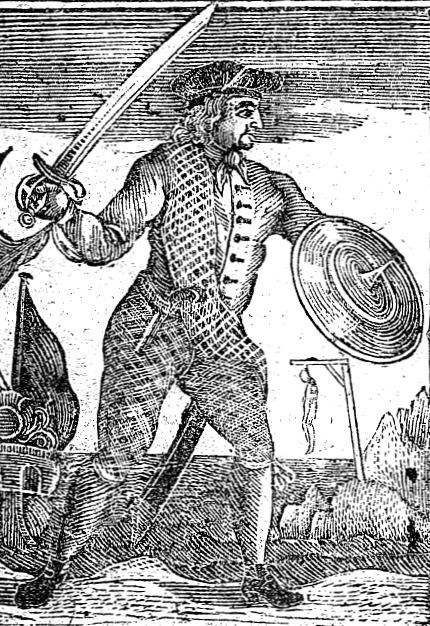
Ernest Marwick
John Gow was a pirate thought to have been born around 1698 in the Caithness town of Wick on the northern coast of Scotland. Gow grew up in Stromness, an important and bustling international port at the time. Young lads would all grow up with a strong calling to the sea and Gow was no exception.
Legend has it that John ran away to sea at an early age, but very little is actually known about his life before the fateful trip on which he turned to piracy.
The Caroline
In August 1724, the 26-year-old Gow found himself in Amsterdam. There, he joined the trading vessel, Caroline, as it’s second mate and gunner. After a month of traveling the ship arrived in Santa Cruz to unload a large cargo of leather, wool cloth and beeswax that was headed for the Republic of Genoa. During the voyage there was considerable discontent among the crew. Since the ship departed Amsterdam, the crew’s complaints about bad food and conditions had become increasingly vocal. Captain Oliver Ferneau was getting that suspicion as well as he prepared weapons in case the crew decided to act.
Mutiny on the Caroline
Ferneau’s preparations didn’t work. On November 3rd, 1724 Gow and the crew mutinied against the captain. Starting with the surgeon and first mate, the mutineers silently cut their throats in the middle of the night. However the surgeon survived and was able to stumble onto the deck and warn the captain. As captain Ferneau was assaulted by three crewmen he held them off until John Gow came up and shot him in the neck and threw him overboard.
John Gow’s career as a pirate began.
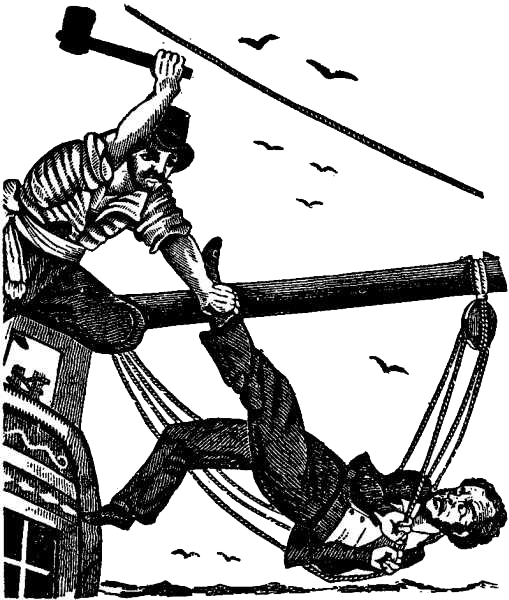
The ship was now under the control of the pirates.
The following day, Gow was elected captain and set about readying the Caroline for her new role. He renamed the ship ‘Revenge’, Gow and his men were soon famed for their acts of piracy in the seas surrounding Spain, France and Portugal.
Gow returns home and marries
Running low on supplies, and pursued by the authorities, Gow decided to head back to Orkney in order to restock. Calling himself an alias ‘Mr. Smith’, Gow pretended to be an honest merchant who was returning to his childhood home. Gow renamed his vessel ‘The George’. He told everyone his ship had blown off course from Stockholm to Cadiz. Since his actions right at the end of the Golden Age of Piracy people were not to keen to interrogate people where their wealth came from.
His intention was not only to lie low for a while but, it is said, he felt the isolated mansions of the islands’ gentry would provide easy pickings. In a matter of weeks he’d set up some lucrative business deals and secured the hand in marriage of the beautiful Helen Gordon, daughter of a local clergyman. To convince her of his honourable intentions, Gow arranged for horses to take the couple to Stenness, where the proposal was sealed by joining hands through the Stone of Odin and swearing to be true until death. Once done, there was no backing out of the marriage.
However before long rumours began to circulate about Gow and his crew. They were confirmed when the captain of a merchant ship recognized the ship and one of Gow’s men as a pirate. Gow never even got a chance to raid the islands, as soon ten of his crew stole Gow’s ship and fled into the mainland of Scotland. One of the pirates fled to Kirkwall before he gave himself up and turned Kings evidence against Gow.
The Hunt for Gow
Ten of the Revenge’s crew fled to the Scottish mainland in the Revenge’s boat, while one, Robert Reid, managed to flee to Kirkwall. There he gave himself up to the law, and, claiming he had been forced to piracy, warned the Justices of the Peace of Gow’s intentions.
The alarm had been raised and Gow’s hand was forced.
On February 10th, 1725 Gow and his remaining crew launched an assault on the Hall of Clestrain in Orphir. This was on the opposite side of the lake from Stromness. According to statements taken on August 11th, 1729 from the Execution Dock in London:
“Nine of the gang went into the house to search for treasure, while the tenth was left to guard the door. The sight of men thus armed occasioned much terror to Mrs Honeyman and her daughter, who shrieked with dreadful apprehensions for their personal safety; but the pirates, employed in the search for plunder, had no idea of molesting the ladies. They seized the linen, plate and other valuable articles, and then walked in triumph to their boat, compelling one of the servants to play before them on the bagpipes.”
A separate account would have it that the “quickwitted daughter” “hid most of the valuable charters and money” so the thieves had to be content with about £7 in cash and some silver spoons. The Clestrain raid was then followed by the abduction of two women. Again, the outcome of this episode depends upon the account.
One account has it that the pirates abducted two servant girls from Clestrain House, These girls, it claims, were: “put ashore on Cava, the following day, so loaded with presents that they soon afterwards got husbands.”
The second account, attributed to the author, Daniel Defoe, states that the girls were taken from Cava and that they suffered badly at the hands of the pirates – so much so that one of the girls later died.
Gow’s next target was Carrick House, the residence of his old school friend James Fea, on the island of Eday. So, setting sail he arrived three days later. However, dangerous currents off the island’s north coast carried the Revenge too near the Calf o’ Eday, where it grounded opposite Carrick House.
On February 17, 1725, after prolonged correspondence between Gow and Fea, the pirate was forced to surrender.
Gow Captured
The pirates were taken to Marshalsea Prison in England. There, Gow refused to plead at his trial so, in an effort to convince him otherwise, his thumbs were “bound together and squeezed with whipcord.”
When these measures failed, Gow was transferred to Newgate Prison. Again he refused to plead, so was “sentenced to be pressed to death in the usual manner”.
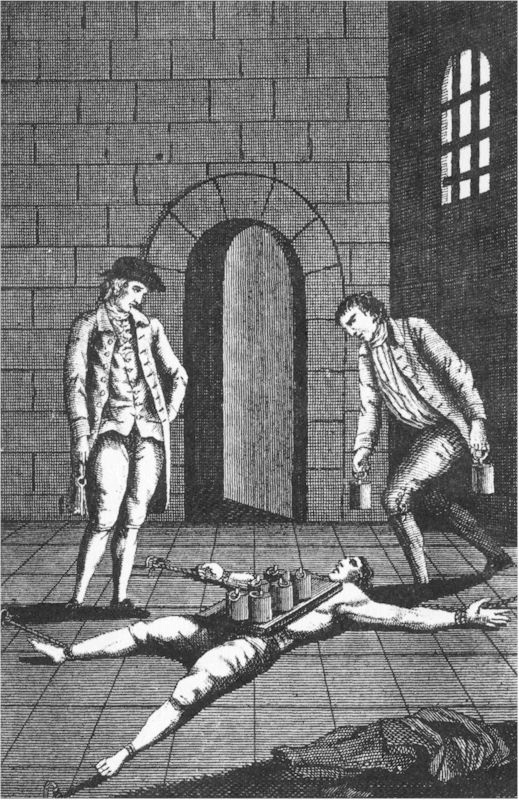
This sentence, for those who refused to enter a plea, would see the defendant:
“be put into a mean house stopped from any light and he be laid upon his back, with his body bare; that his arms be stretched forth with cord, the one to one side, the other to the other side of the prison, and in like manner his legs be used, and upon his body be laid as much iron and stone as he can bear and more. The first day he shall have three morsels of barley bread, and the next he shall drink thrice of the water in the next channel to the prison door but of no spring and fountain water; and this shall be his punishment till he die”.
Rather than endure such torture, Gow opted to plead not guilty. Tried at the Old Bailey, he was quickly charged with murder and piracy and found guilty.
Gow and seven accomplices were executed together at Execution Dock, London, on June 11, 1725. But even the hanging wasn’t straightforward.
Gow had asked for a speedy dispatch so the executioner “pulled him by the legs, but so hard that the rope broke”.
So Gow, “still alive and sensible enough to climb the ladder a second time” returned to the gallows, to be hanged for a second time.
This time it was successful.
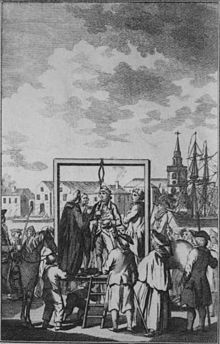
Their bodies were left in the Thames for “three tides”, after which the corpses of the two ringleaders were bound in chains, and tarred, before being hung on the river bank Thames – a grim warning for those who might follow in the footsteps of the Orkney Pirate.
“It would be wrong to judge Gow’s actions with modern yardsticks, after 250 years we can afford to be charitable and thankful that he brought a splash of colour to our past, even if it was blood red.”
G. Watson. The Short Career of Pirate Gow
The Pirate Code
Gow will always be most famous for his pirate code that he set forth. It is one of only three remaining copies from the 18th century as most pirates burned or destroyed theirs rather than having it risked getting used in trial against them. This is the following pirate code for Jon Gow and his crew:
I. That every man shall obey his commander in all respects, as if the ship was his own, and as if he received monthly wages.
II. That no man shall give, or dispose of, the ship’s provisions; but every one shall have an equal share.
III. That no man shall open, or declare to any person or persons, who they are, or what designs they are upon; and any persons so offending shall be punished with immediate death.
IV. That no man shall go on shore till the ship is off the ground, and in readiness to put to sea.
V. That every man shall keep his watch night and day; and at the hour of eight in the evening every one shall retire from gaming and drinking, in order to attend his respective station.
VI. Every person who shall offend against any of these articles shall be punished with death, or in such other manner as the ship’s company shall think proper.
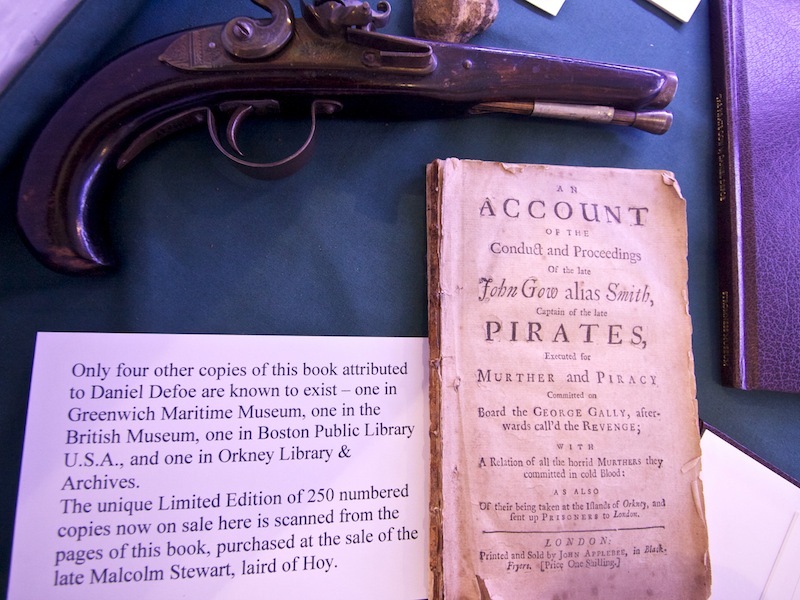

Was Gow a successful pirate